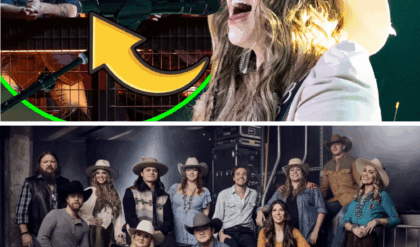Few films have left an indelible mark on cinema like The Silence of the Lambs, the 1991 psychological thriller that continues to haunt viewers decades after its release. Directed by Jonathan Demme and adapted from Thomas Harris’s novel, the movie earned a rare sweep of the “Big Five” Academy Awards—Best Picture, Best Director, Best Actor, Best Actress, and Best Adapted Screenplay—thanks to the unforgettable performances of Jodie Foster as FBI trainee Clarice Starling and Anthony Hopkins as the chilling Dr. Hannibal Lecter. As of July 15, 2025, the film’s enduring power is once again in the spotlight, spurred by Foster’s recent reflections on the scene she found most terrifying, a moment so gripping that fans are compelled to revisit the movie immediately upon hearing about it.
The scene in question unfolds in the dimly lit basement of Buffalo Bill, the serial killer Clarice is hunting, portrayed with unsettling menace by Ted Levine. In this sequence, Clarice, armed only with a flashlight and her wits, descends into the killer’s lair after tracking him to his home. Unaware that Buffalo Bill is lurking in the shadows, she explores the eerie space, her beam of light revealing a nightmarish tableau: walls lined with clippings, a mannequin dressed in human skin, and the faint sound of a moth fluttering. The tension peaks when Catherine Martin, the senator’s daughter and Buffalo Bill’s latest captive, screams from a pit in the floor, her voice a desperate cry for help. As Clarice turns to investigate, Buffalo Bill, wearing night-vision goggles, stalks her in silence, his presence marked only by the click of his pistol being cocked. The scene ends with Clarice firing blindly into the darkness, her trembling hands and rapid breathing capturing her raw fear—a moment Foster has singled out as the film’s most harrowing.
In a recent interview, Foster opened up about the experience of filming this sequence, describing it as a visceral plunge into terror. “That basement scene was the one that got under my skin the most,” she revealed, her voice carrying a mix of admiration and unease. “The way Jonathan [Demme] shot it, with the darkness closing in and Ted [Levine] just watching me through those goggles—it felt like being hunted. I wasn’t acting scared; I was scared.” Foster explained that the scene’s power stemmed from its slow build, allowing the audience to feel Clarice’s isolation and vulnerability. The use of point-of-view shots, a hallmark of Demme’s direction, placed viewers directly in Clarice’s perspective, amplifying the sense of impending doom. Foster’s admission has reignited interest in the film, with fans on social media echoing her sentiment, describing the scene as “impossibly tense” and admitting it leaves them “shaken every time.”
The basement sequence stands out for its psychological depth, a trait that defines The Silence of the Lambs. Unlike typical horror films reliant on jump scares or gore, this moment relies on atmosphere and anticipation. The flickering flashlight, the muffled screams, and Buffalo Bill’s silent pursuit create a suffocating tension that lingers long after the screen fades. Levine’s performance, marked by his eerie stillness and the chilling image of him dancing in front of a mirror earlier in the film, adds to the dread. Foster noted that this contrast—between the quiet buildup and the sudden violence—mirrored her own experience on set. “Ted was so professional, but when he put on those goggles, it was like he became someone else,” she said. “I had to remind myself it was just a movie.”
This revelation comes at a time when The Silence of the Lambs is experiencing a resurgence in 2025. The film, available on streaming platforms like Max and AMC+, has seen renewed attention following events like the London Soundtrack Festival in March, where its iconic score by Howard Shore was performed live. Foster’s comments have fueled this revival, with viewers revisiting the movie to pinpoint the scene she described. The basement encounter, often cited in reviews as the film’s most terrifying moment, has been dissected online, with some calling it “a masterclass in suspense” and others confessing it prompts them to sleep with the lights on. The scene’s impact is heightened by its context within Clarice’s journey, a young woman navigating a male-dominated FBI and confronting her own past traumas, including the haunting memory of lambs she couldn’t save.
Foster’s portrayal of Clarice remains a cornerstone of the film’s legacy. At 28 during filming, she brought a blend of fragility and determination to the role, earning her a second Best Actress Oscar. Her decision to play Clarice with a soft voice and hesitant demeanor, as opposed to a stereotypically tough agent, added authenticity to the character’s fear in the basement. “I wanted her to feel human, not like some action hero,” Foster explained. This choice paid off, making Clarice’s eventual triumph over Buffalo Bill—a blind shot that ends his reign—feel earned rather than contrived. Hopkins, whose Lecter appears for only about 16 minutes yet dominates the film, complemented Foster’s performance with his unsettling calm, creating a dynamic that critics like Roger Ebert praised as a “horror masterpiece.”

The basement scene’s terror is not just a product of performance but also Demme’s innovative direction. His use of close-ups and POV shots, inspired by his work on Married to the Mob, immersed audiences in Clarice’s experience. The decision to film much of it in a single take, with minimal cuts, intensified the realism, a technique Foster credited to Demme’s trust in his actors. “He let us live in that moment,” she said, recalling how the crew’s silence on set mirrored the scene’s quiet horror. The production design, including the claustrophobic basement set built in Pittsburgh, further enhanced the unease, with props like the moth—symbolizing Buffalo Bill’s obsession—adding a layer of macabre detail.
Since its release on February 14, 1991, The Silence of the Lambs has grossed over $272 million worldwide and remains a cultural touchstone. Its influence is evident in modern thrillers, with directors citing its psychological approach as a benchmark. In 2025, the film’s relevance persists, fueled by Foster’s reflections and its availability across platforms like Apple TV and Google Play Movies. The basement scene, in particular, has become a focal point for analysis, with fans debating its placement among cinema’s scariest moments—rivaling classics like Psycho’s shower scene. Foster’s endorsement has only deepened this fascination, prompting a new wave of viewings.
For Foster, revisiting this memory is bittersweet. Now 62 and acclaimed for recent roles like True Detective: Night Country, she reflects on The Silence of the Lambs with pride but also a sense of closure. “It’s strange to think that scene still scares people,” she admitted. “It scared me then, and it scares me now when I watch it.” Her words have sparked a collective urge among fans to rewatch the film, with many sharing clips online and debating whether the basement encounter or Lecter’s escape—marked by his chilling line, “I’m having an old friend for dinner”—holds the crown for most terrifying. Regardless, Foster’s insight has cemented the scene’s status as a pivotal moment, a testament to the film’s enduring ability to provoke and unsettle.
As summer 2025 unfolds, The Silence of the Lambs continues to cast a long shadow, its terror as potent as ever. Jodie Foster’s revelation about the basement scene not only honors the craft behind it but also invites a new generation to experience the dread she felt, ensuring the film’s place as a timeless thriller that demands to be seen again—and again.





